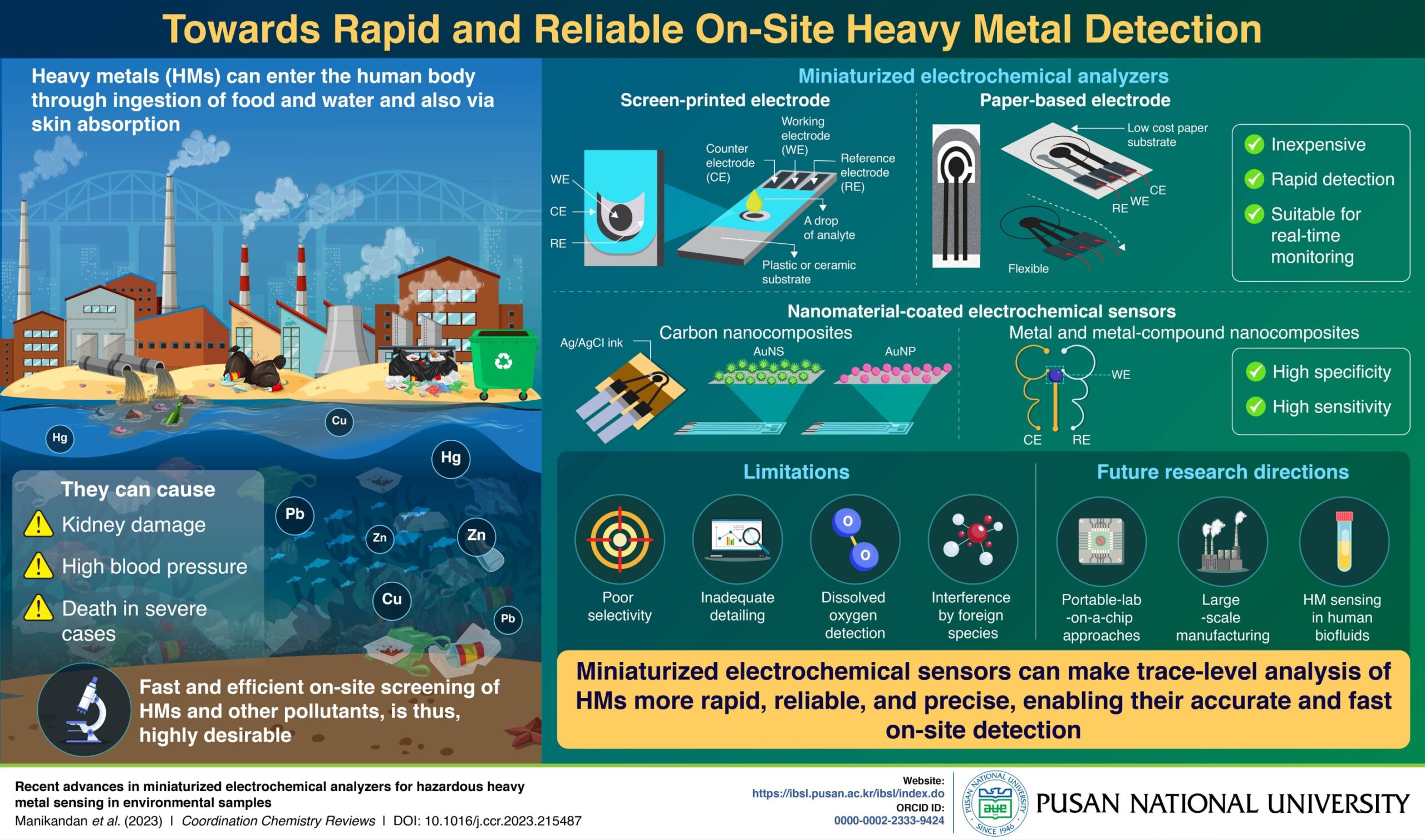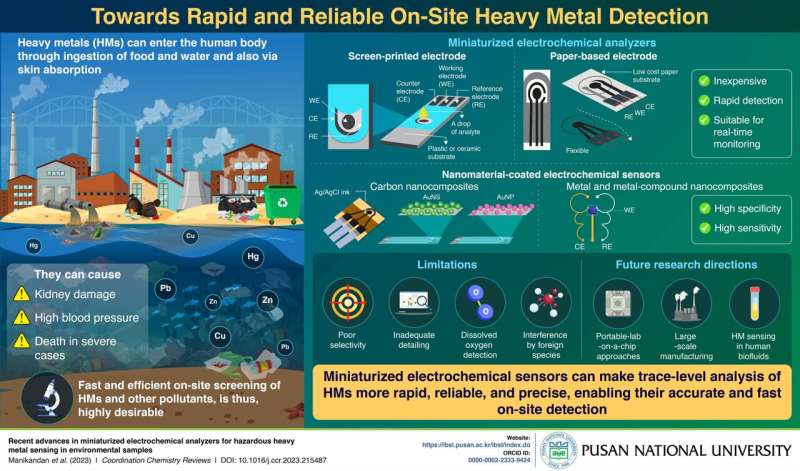

Heavy metals (HMs) are metals with high densities and atomic weights. Originating from geological processes or human activities, including mining, industrial production, and petrochemical plants, they are toxic to humans and animals and considered as common pollutants in the environment.
HMs can enter the human body by ingestion of polluted food or water, adsorption through the skin, or respiration of polluted air. They are known to cause severe health problems in humans, such as kidney damage, high blood pressure, nervous system damage, fertility defects, and even death.
Hence, precise and compact HM detection technologies are essential to assess their concentrations in the environment and screen for health issues arising from their pollution. To this end, recent years have seen a rise in the use of electrochemical sensing techniques for on-site screening of HM pollutants.
In a new study now, a team of researchers from Korea, led by Professor Seung-Cheol Chang from the Department of Optics and Mechatronics Engineering at the College of Nanoscience and Nanotechnology at Pusan National University, comprehensively reviewed the recent developments in electrochemical sensors for heavy metal detection.
“Conventional analytical techniques for HM detection are difficult to use for on-field analysis. There is, therefore, an urgent need for portable electrochemical sensors that are easy to use, cost-effective, and suitable for rapid on-site detection,” explains Prof. Chang.
First author Dr. Ramalingam Manikandan from Prof. Chang’s lab contributed significantly with a lot of practical work for this study, which was published in the journal Coordination Chemistry Reviews.
In this review, the team focused exclusively on miniaturized electrochemical sensors that are suitable for on-site detection of HM pollutants. They investigated different sensor variants such as screen-printed electrodes (SPEs), paper-based electrodes, and nanomaterial-coated sensors made from carbon nanocomposites, metal nanoparticles, and metal-compound nanocomposites.
Their analysis revealed that miniaturized electrochemical sensors based on SPEs and paper-based electrodes offer low-cost and time-efficient analysis while also reducing the required amount of sample and supporting electrolytes.
These sensors also effectively address the limitations of conventional laboratory-based methods. Additionally, nanomaterial-based sensors exhibit high specificity and sensitivity, enabling the detection of ultra-trace amounts of HMs with high accuracy in a wide variety of environmental conditions.
Despite these advances, however, the team acknowledged the existing limitations of electrochemical sensors that still need to be addressed. Current electrochemical detection approaches suffer from poor selectivity, inadequate level of detail, and interference by foreign species that can have detrimental effects during on-site analysis.
Also, additional encounters with dissolved oxygen species, while necessary for analyzing conductivity and pH, contribute to a decline in the detection ability of these sensors over time.
The researchers also stressed the need for portable lab-on-a-chip approaches and large-scale manufacturing of disposable, flexible, and wearable electrochemical sensors. Moreover, innovative electrochemical detection strategies are required for HM sensing in human biofluid samples, such as saliva, blood, and urine.
“One of the most difficult tasks is the commercialization of the advanced and systematic ideas put forward by academia, pharmaceutical industries, and government bodies in combination with proper validation techniques,” says Prof. Chang, while talking about the future of research on electrochemical sensors for HMs.
Nonetheless, the team is confident that ongoing research in electronics, nanotechnology, and materials technology can overcome some of the existing issues, paving the way for more rapid, reliable, and precise on-site detection of HMs for a safer and healthier environment.
More information:
Ramalingam Manikandan et al, Recent advances in miniaturized electrochemical analyzers for hazardous heavy metal sensing in environmental samples, Coordination Chemistry Reviews (2023). DOI: 10.1016/j.ccr.2023.215487
Provided by
Pusan National University
Citation:
Researchers review miniaturized electrochemical sensor technologies for rapid heavy metal detection (2023, December 12)
retrieved 13 December 2023
from https://phys.org/news/2023-12-miniaturized-electrochemical-sensor-technologies-rapid.html
This document is subject to copyright. Apart from any fair dealing for the purpose of private study or research, no
part may be reproduced without the written permission. The content is provided for information purposes only.


